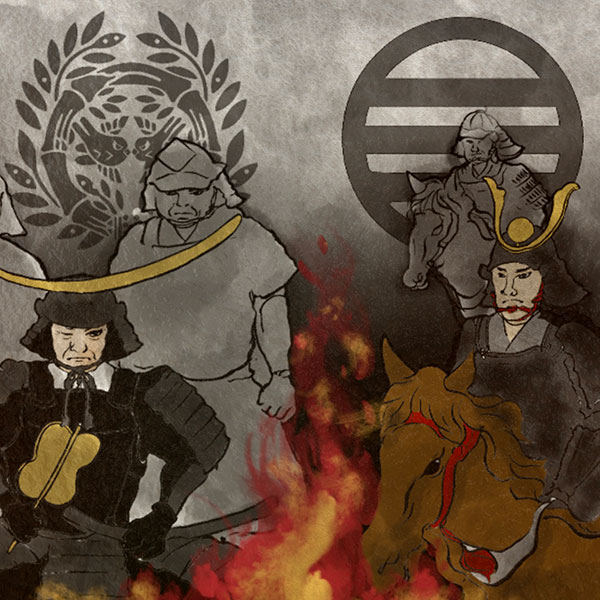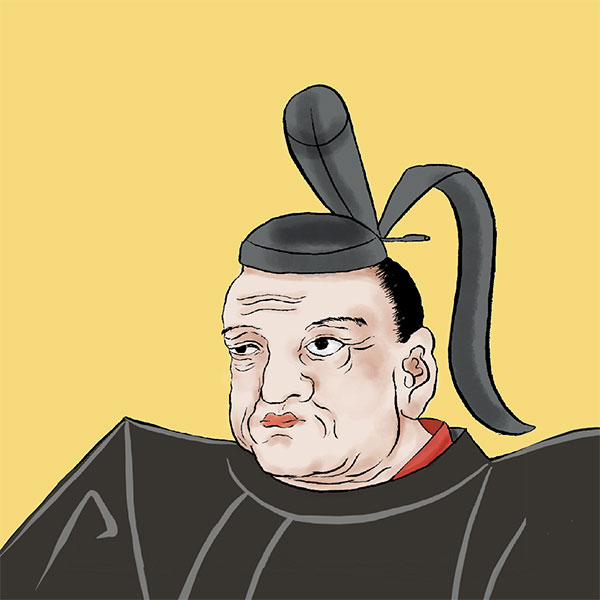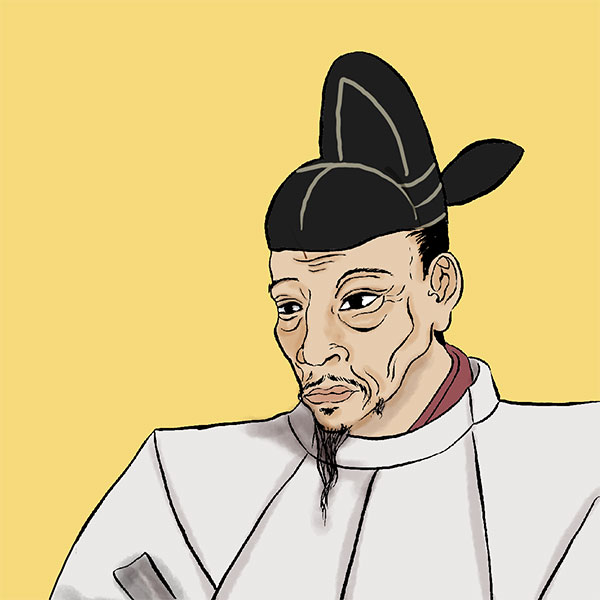Battle of Suriuehara (1/2)Date Masamune destroyed the Ashina clan and became the ruler of Oshu.

Battle of Suriuehara
- Article category
- case file
- Incident name
- Battle of Suriuehara (1589)
- place
- Fukushima Prefecture
- Related castles, temples and shrines

Tsuruga Castle

Yonezawa Castle
- people involved
On June 5, 1589, Date Masamune of Yonezawa (around present-day Yonezawa City, Yamagata Prefecture) attacked and destroyed the Ashina clan of Aizu (Aizu region of Fukushima Prefecture). ``The Battle''. The Ashina clan has a deep connection with the Date clan, with whom they sometimes fought and sometimes fought together as an ally over the hegemony of Oshu. By defeating the Ashina clan in the Battle of Suriuehara, Masamune rose to become the leader in Oshu with a total of 1.14 million koku. This time, we will explain in an easy-to-understand manner the Battle of Suriuehara, which was a major turning point for Masamune.
What is “Oshu” where Date Masamune rose to prominence?
Oshu was an area where small and medium-sized Sengoku feudal lords such as the Date clan, Nanbu clan, Kasai clan, Ando clan, Mogami clan, Hatakeyama clan, Ashina clan, and Satake clan were scattered, and skirmishes continued for a long time as they fought for supremacy. . In the center, Oda Nobunaga was defeated by Akechi Mitsuhide in the Honnoji Incident in 1582, and the situation remained unchanged even when Toyotomi Hideyoshi was proceeding with the unification of Japan.
Under such circumstances, Masamune Date, a key figure in the Battle of Suriuehara, succeeded his father, Terumune Date, as head of the family in 1584. Terumune was 41 years old and Masamune was 18 years old, and considering Terumune's age, it seems like it was too early to hand over the headship of the family, but it seems that the aim was to calm down the dispute over the succession within the family and strengthen the unity of the Date clan. is.
Masamune, who took over as head of the family, began attacking neighboring powers one after another in an attempt to gain supremacy over Oshu. In Leap August 1585, he attacked the Kotemori Castle of Sadatsuna Ouchi, who had betrayed the Date clan and joined the Ashina clan, and killed everyone, including women and children (Kotemori Castle Stroke). According to a letter that Masamune sent to his uncle Mogami Yoshimitsu immediately after, it is said that more than 1,000 people were killed, but other historical sources put the number at 200 or 800, so the scale of the dead is not well known. However, because he ``murdered all the large numbers of people,'' Date Masamune came to be feared by surrounding countries.
Masamune is in a critical situation in his father's funeral battle "Battle of Hitotori Bridge"!
Date Masamune then attacked Yoshitsugu Hatakeyama at Nihonmatsu Castle (Nihonmatsu City, Fukushima Prefecture). Yoshitsugu proposes to surrender and sits down to make peace, but at that time, his father, Terumune Date, is abducted! The story goes that Masamune, who pursued him, shot and killed both Terumune and Yoshitsugu at the sound of Terumune's voice, ``Shoot me!''. There are various theories about Terumune's final moments, some say that Masamune tearfully killed his father, others say that Masamune was not even there, and that Terumune and Masamune were fighting over diplomacy with surrounding countries, and that the incident was Masamune's plot. It is also said that
Afterwards, Masamune attacked the Hatakeyama clan's Nihonmatsu Castle, thinking it was a battle to mourn Terumune. The Hatakeyama clan asked for help from the surrounding area, and in response, the Ashina clan, who did not like Masamune, and the Satake clan of Hitachi Province (Ibaraki Prefecture) sent reinforcements to the Hatakeyama clan, and a total of about 30,000 soldiers gathered as an allied force. The Date army was about 7,000 strong, and it was during this crisis that the Battle of Hitotori Bridge (Motomiya City, Fukushima Prefecture) took place. Masamune's army suffered heavy damage, but the battle ended when the Satake clan, the main force of the allied forces, withdrew due to a sudden report that the Hojo army had invaded their homeland, and Masamune escaped unscathed. Incidentally, there is also a theory that this withdrawal of the Satake clan was due to behind-the-scenes maneuvering by Masamune.
Masamune once again attacked Nihonmatsu Castle, which was currently under siege, and continued to carry out countermeasures such as forcing the Hatakeyama clan's vassals to defect. As a result, in July 1586, the two sides made peace with the help of the Soma clan, and Nihonmatsu Castle was handed over to Masamune in a bloodless surrender.
Even after the Battle of Hitotori Bridge, Date Masamune attacked surrounding forces. In February 1588, they took advantage of the internal conflict within the Osaki clan that ruled the Osaki region (around Osaki City, Miyagi Prefecture) to attack Yoshitaka Osaki (the Battle of Osaki), but due to the intervention of the Mogami clan, they were defeated. and failed. A reconciliation with the Mogami clan was achieved through the intervention of Yoshihime, Yoshimitsu's sister and Masamune's mother.
In this way, rather than completely crushing each other in the battle of Oshu, when the battle reached a stalemate, surrounding military commanders acted as intermediaries, and in most cases, peace was achieved without the destruction of both sides. This was because Masamune's grandfather, Date Tanemune, had a foreign policy of expanding his power through marriage and adoption. At that time, Oshu was a family tree that was too complicated to understand, with enemies, allies, and all the military commanders standing on the sidelines all related to each other.
Clash with the Satake and Ashina clans at the ``Koriyama Battle''
Upon learning of Masamune's defeat at the Battle of Osaki, Yoshihiro Ashina immediately launched a war, saying, ``This is a good opportunity to crush Masamune!'' (Koriyama Battle). At this time, Sadatsuna Ouchi, who had returned to the Date clan, joined the Ashina clan once again, but Masamune's right-hand man, Datezumi, arranged a scheme and brought Sadatsuna back into the Date army, which succeeded in driving away the Ashina army. Masu. Subsequently, in May 1998, the Ashina and Soma combined forces attacked the Date clan, but this ended in several skirmishes. In June, the Satake-Ashina coalition attacked the Date clan.
The alliance between the Satake clan and the Ashina clan has a lot to do with the Ashina clan's succession issue. The Ashina clan is a famous family that has flourished for 400 years, mainly in the Aizu region, and reached its peak during the time of the famous commander Moriji Ashina. However, after the Mori clan, the direct heirs died one after another, and the family line was in danger of becoming extinct. For this reason, we decided to bring in an heir from another blood-related family.
The candidate at this time was Date Masamune's younger brother, Date Kojiro, and Yoshihiro Shirakawa, the second son of Satake Yoshishige and the successor to the Shirakawa clan at the time. The Satake faction won the succession battle, and Yoshihiro became the head of the Ashina clan as Yoshihiro Ashina. In other words, Yoshishige Satake, the top leader of the Allied Forces, and Yoshihiro Ashina had a father-son relationship.
At the time of the Koriyama battle, the difference in military strength was 4,000 for the Satake/Ashina coalition versus 600 for the Date army. It seems that the Date army is at an overwhelming disadvantage, but thanks to the efforts of Datezumi Date, Kagetsuna Katakura, and others, the Date army somehow manages to survive with a desperate defense. In mid-July, a peace agreement was reached through the mediation of Tsunetaka Iwaki and other military commanders in the area.
Why did the Satake-Ashina coalition agree to peace negotiations even though they had an advantage? According to one theory, one reason was that the Hojo clan, which had been in an alliance with the Date family since the era of Terumune Date, tried to attack Satake. Furthermore, in December 1587, the Kanpaku Toyotomi Hideyoshi issued the ``Sōkō edict'' to the Kanto and Ou regions, which prohibited private fighting between feudal lords, and the Satake clan was under pressure from this. There is also a theory that However, recent research has come up with various theories regarding the nature and effectiveness of the Sohan Rei, such as when it was issued and that it actually did not have that much binding force, so it is hard to say.
Battle of Suriuehara ① Negotiation of Inawashiro clan behind the attack of Soma clan
Date Masamune continues to fight with surrounding forces. In April 1589, Yoshitane Soma and Tsunetaka Iwaki began an invasion of the territory of the Tamura clan, the family home of Masamune's wife Aihime, and in order to counter this they built Yonezawa Castle (Yonezawa City, Yamagata Prefecture). ). I will enter Omori Castle (Fukushima City, Fukushima Prefecture) on April 23rd. Just as we were thinking of fighting, Ouchi Sadatsuna's younger brother, Katahira Chikatsuna from Ashinakata, tipped off the Date clan. Masamune saw this as a good opportunity to attack Ashina.
Therefore, Masamune set out from Omori Castle, entered Motomiya Castle (Motomiya City, Fukushima Prefecture), and captured the Ashina clan's Ankojima Castle and Takatama Castle (both located in Atami Town, Koriyama City, Fukushima Prefecture), and while keeping the Ashina clan in check, returned to Omori Castle. i am back. After that, instead of directly attacking the Ashina clan, he captured the Soma clan's Komagamine Castle and Minokubi Castle (both in Shinchi-cho, Soma-gun, Fukushima Prefecture) to keep the Soma clan in check. As long as Soma Yoshitane returned to Soma territory, it would be difficult for Tsunetaka Iwaki to attack Tamura territory alone, so perhaps he thought that the issue of Tamura territory would be resolved.In any case, Soma Yoshitane would send troops from Tamura territory. I pulled it.
On the other hand, Yoshihiro Ashina senses Masamune's movements and asks Mr. Satake for help. In response, Yoshihiro's older brother, Yoshinobu Satake, sent reinforcements and set up camp in Sukagawa (Sukagawa City, Fukushima Prefecture) south of Motomiya Castle, where they joined up with the Ashina army. Head north and aim to recapture Ankogashima Castle and Takatama Castle. Furthermore, his father, Yoshishige Satake, remains in Shirakawa.
However, at this time, Masamune's strategy was very successful, and a major incident occurred in which Morikuni Inawashiro of Inawashiro Castle (Inawashiro-cho, Yama-gun, Fukushima Prefecture), who had been on the Ashin side, defected to the Date side. Morikuni was originally a senior vassal of the Ashina clan. After passing over the headship of the family to his eldest son, Moritane, and retiring, he decided to oust Moritane for the sake of his second wife's son, Sokuni, whom he adored, and robbed Inawashiro Castle while Moritane was away at Kurokawa Castle. Moritane was unable to recapture the castle because his vassals also followed Morikuni, and Inawashiro Castle became Morikuni's property.
In fact, Morikuni had previously tried to defect to the Date side, but due to Moritane's opposition, this did not happen. Since none of his sons objected this time, Morikuni switched sides. It is said that the reason for the switchover was that the Inawashiro clan was being treated poorly within the Ashina clan. Morikuni was the main force behind the Date faction when it came to succession issues, so he may have been hated by the Satake faction.
Battle of Suriuehara ② Inawashiro Castle is in the hands of Date!? The Ashina clan is anxious
Inawashiro Castle is approximately 20km in a straight line from Kurokawa Castle, the home base of the Ashina clan, and there are no mountains or other obstructions along the way, allowing troops to reach Kurokawa Castle quickly. A big crisis for Mr. Ashina! Yoshihiro Ashina immediately returned to Kurokawa Castle.
The article on the Battle of Suriuehara continues.
- people involved

- WriterNaoko Kurimoto(Writer)I am a former travel industry magazine reporter. I have loved history, both Japanese and world history, since I was a child. I usually enjoy visiting temples and shrines, especially shrines, and often do ``pilgrimages to sacred places'' themed around historical figures. My favorite military commander is Ishida Mitsunari, my favorite castle is Kumamoto Castle, and my favorite castle ruins is Hagi Castle. My heart flutters when I see the ruins of battle castles and the stone walls of castle ruins.






